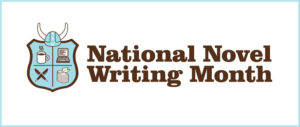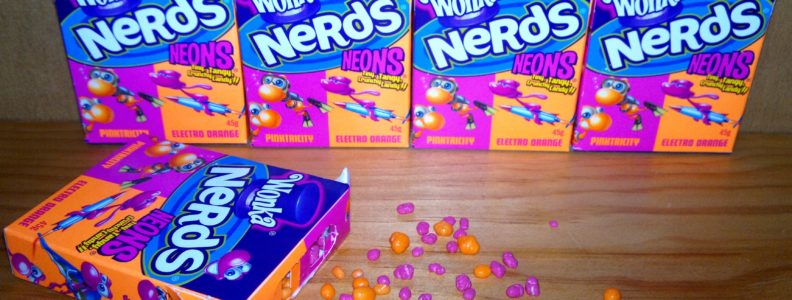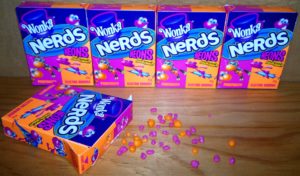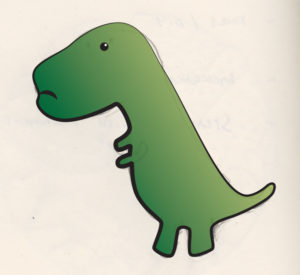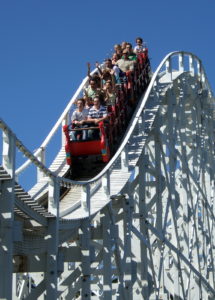The first time a member of my writing group told me about Nanowrimo, I thought they were joking. Then I thought they were insane. 50,000 words? That alone was daunting, but in a month? 30 days? Just under 1700 words a day? I don’t think I’d ever even used the word count feature in the old Microsoft Word. (This was back before the counter automatically came up in the bottom corner.)
I told my friend she was crazy and that I wasn’t doing it.
But it niggled at the back of my mind for a couple of weeks. Surely I could write a novel. I’d read enough epic fantasy stories that I could cobble one together. Right? Just go through the cliché’s like a checklist of groceries. Thief? Check. Rouge? Check. Prince? Check. Wizard? Check. Grouchy old guy? Check. Impossible quest? Check. Witty banter? Check. Riding horses? Check. Er, I mean. No. I’m not doing it!
I resisted. I didn’t plan. I ignored the little voice in my head…until three days before November.
I remember it clearly. I was in the doctor’s office. Waiting. I had a pen and paper and I pulled it out and wrote down a single line. My plot. I already had characters I could steal from a stupid story that a couple of friends and I made up. And they didn’t need backgrounds, because I would give them amnesia at the beginning of the story! But not normal amnesia, this is a curse, and they have to figure out who they are, but if they get to close to the truth, their heads will explode.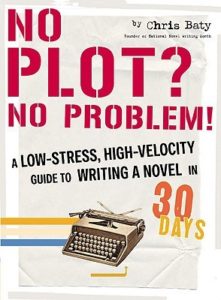
It was so bad I thought it just might work.
However, on the way home from the doctor’s office, I stopped by Barnes and Nobel and got the book, “No Plot? No Problem.” I read through it in the few days I had before November 1st. I psyched myself up, shoved my inner editor out onto the back porch for the month and started writing.
It was amazing. I found out that I could type 1700 words in forty five minutes. I totally used the mental list of clichés. I woke up on more than one morning more excited about what my characters were going to do that day than I was about anything else.
I hit 50,000 words three days early.
The experience really empowered me. I hadn’t planned. I hadn’t agonized. I didn’t even have a thumb drive to save the file on until after I’d started. And yet, at the end of twenty seven days, I had a novel. Sort of. It wasn’t finished, and it wasn’t good, but it was there.
It took me two more Nanowrimos to finish that first story, and since then I think I’ve done it five more times. None of them will ever see the light of day. Sometimes I do a detailed outline, and other times I have an idea in mind and I start to write.
If outlining works for you, do it. If it doesn’t, Nano is a great time to explore a story you’ve been thinking about. If you don’t think you can do it, think again. Toss that inner editor out for the month and start writing. If the story gets boring, find a cliché and use it. Ninja robot monkeys. Flying carpets. Self-braiding nose hairs. Skip whole sections and go to the part you want to write. Don’t stress about it, just do it.
